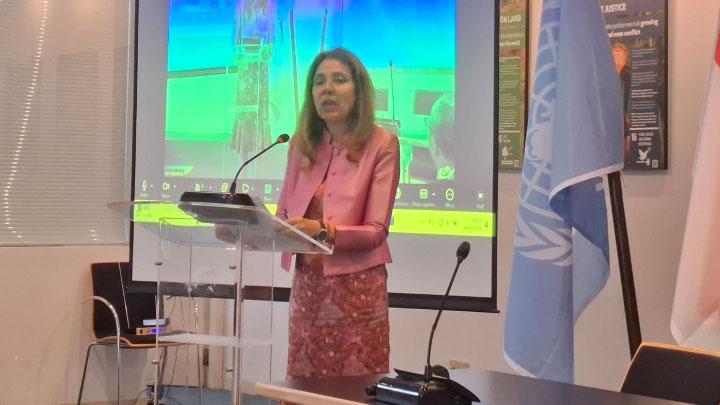TEMPO.CO, Jakarta - Israel and Lebanon's Hezbollah agreed to a ceasefire under a deal that aims to end more than a year of hostilities ignited by the ongoing Israeli offensive in Gaza.
Here are some of the main costs of the conflict, which escalated two months ago when Israel went on the offensive against the Iran-backed group.
CASUALTIES
At least 3,768 people have been killed in Lebanon and 15,699 wounded since October 2023, according to Lebanon's health ministry as of November 24. The figures do not differentiate between Hezbollah fighters and civilians. The vast majority of casualties were inflicted after Israel went on the offensive in September.
The number of Hezbollah dead has yet to emerge. The group had announced the deaths of about 500 of its fighters in the hostilities up until the point that Israel launched its offensive in September, but stopped doing so at that point.
Tel Aviv University's Institute for National Security Studies, which has deep ties to the military establishment, says Hezbollah has lost a total of 2,450.
Hezbollah strikes have killed 45 civilians in northern Israel and the Israeli-occupied Golan Heights.
At least 73 Israeli soldiers have been killed in northern Israel, the Golan Heights, and in combat in southern Lebanon, according to Israeli authorities.
DESTRUCTION
In Lebanon, the cost of damage to housing is estimated at $2.8 billion, with more than 99,000 housing units partially or fully destroyed, according to a World Bank report.
In Beirut's southern suburb alone, Israeli strikes have demolished at least 262 buildings, according to the American University Beirut Urban Lab.
The Israeli military has also done extensive damage in villages and towns in the Bekaa Valley and south Lebanon.
The World Bank report estimated damage in agriculture at $124 million, with losses of more than $1.1 billion, driven by lost harvests caused by the destruction of crops and livestock and displacement of farmers.
In Israel, Israeli authorities estimate property damage to be at least 1 billion shekels ($273 million), with thousands of homes, farms, and businesses damaged or destroyed.
The bulk of the damage in Israel has been inflicted in areas adjacent to the Lebanese border, pummeled by Hezbollah rockets.
About 55,000 acres of forestry, nature reserve, parks, and open lands in northern Israel and the Golan Heights have been burnt down since the start of the war, Israeli authorities say.
DISPLACEMENT
As of November 18, over 886,000 people have been displaced within Lebanon, according to the International Organization for Migration (IOM) and the United Nations High Commissioner for Refugees (UNHCR).
Over 540,000 people have fled Lebanon to Syria since the war started, data by UNHCR showed.
In Israel, some 60,000 people evacuated homes in the north.
ECONOMIC IMPACT
The World Bank gave a preliminary estimate of $8.5 billion in damage and losses to Lebanon in a November 14 report. Lebanon's real GDP is projected to contract by 5.7% in 2024, compared to a pre-conflict growth estimate of 0.9%.
Driven by the destruction of crops and livestock and the displacement of farmers, especially in the southern regions, the agriculture sector has seen losses exceeding $1.1 billion over the past 12 months. Tourism and hospitality, key contributors to Lebanon’s economy, have been hit hardest, with losses reaching $1.1 billion, according to the World Bank.
For Israel, the conflict with Hezbollah has compounded the economic impact of the war in Gaza, straining public finances.
The budget deficit has surged to approximately 8% of GDP, prompting all three major credit rating agencies to downgrade Israel's rating this year.
The conflict has also exacerbated supply chain disruptions, driving inflation to 3.5%, above the central bank's 1-3% target range. In response, the central bank has maintained high interest rates to curb inflation, keeping mortgage rates elevated and adding further pressure on households.
Israel's economy in the third quarter rebounded somewhat from a weak second quarter, expanding by an annualised 3.8%, according to the government's preliminary estimate.
REUTERS
Editor’s Choice: Israel-Hezbollah Ceasefire Takes Effect, Civilians Head Back to South Lebanon
Click here to get the latest news updates from Tempo on Google News

 3 months ago
78
3 months ago
78












































